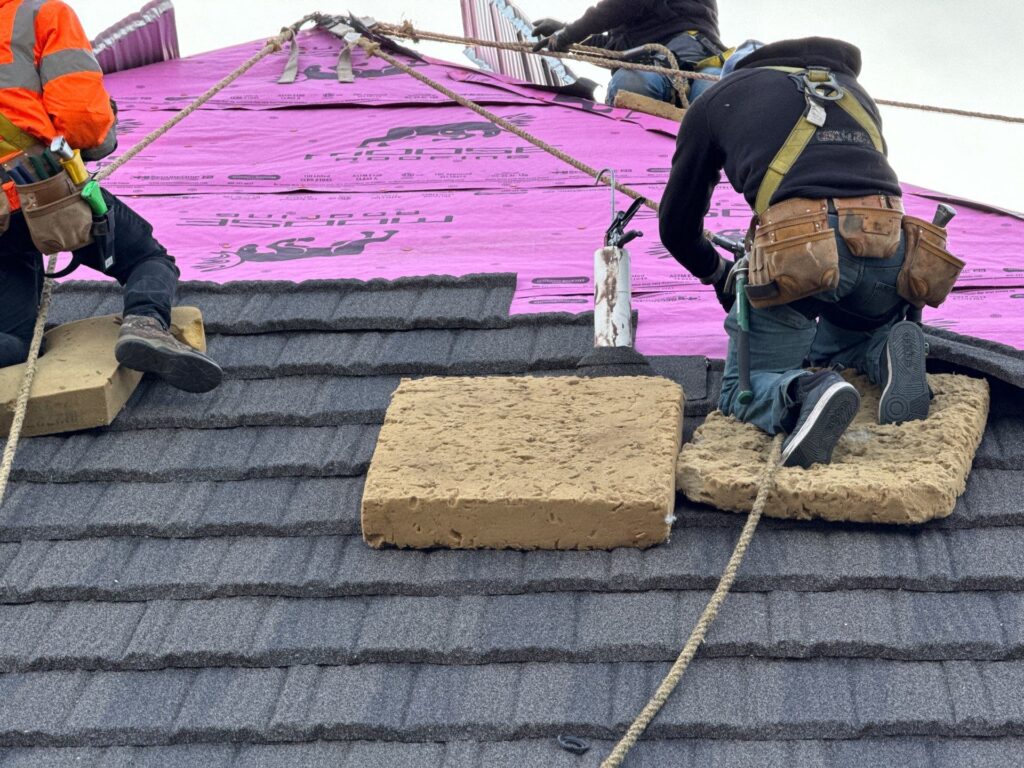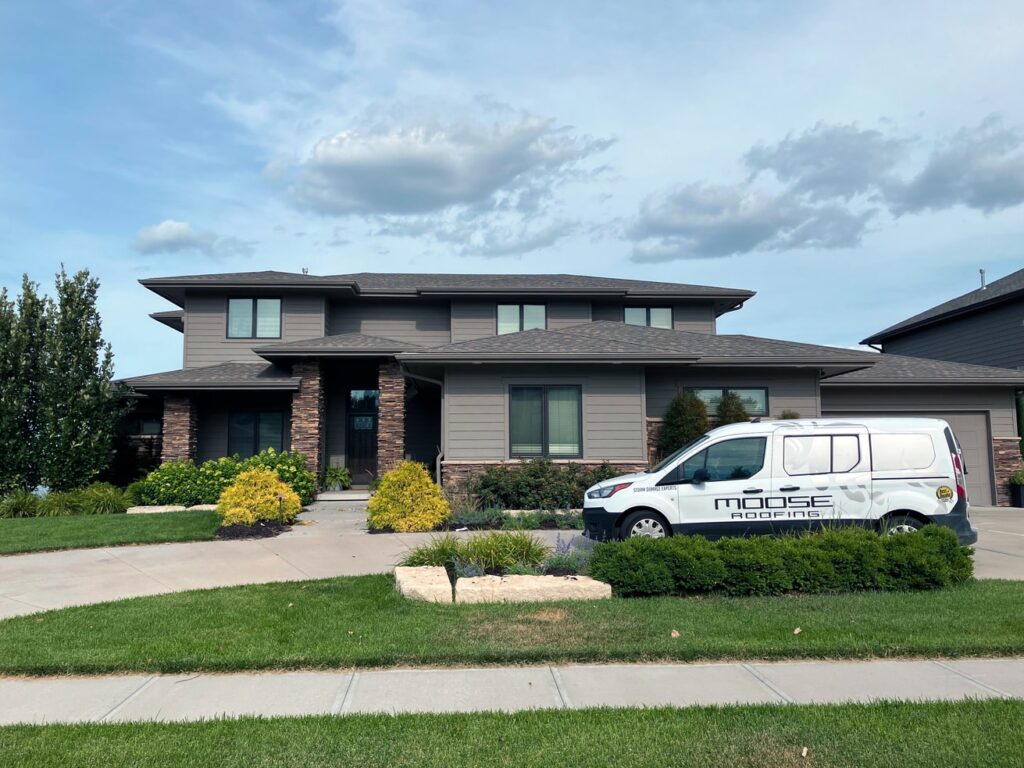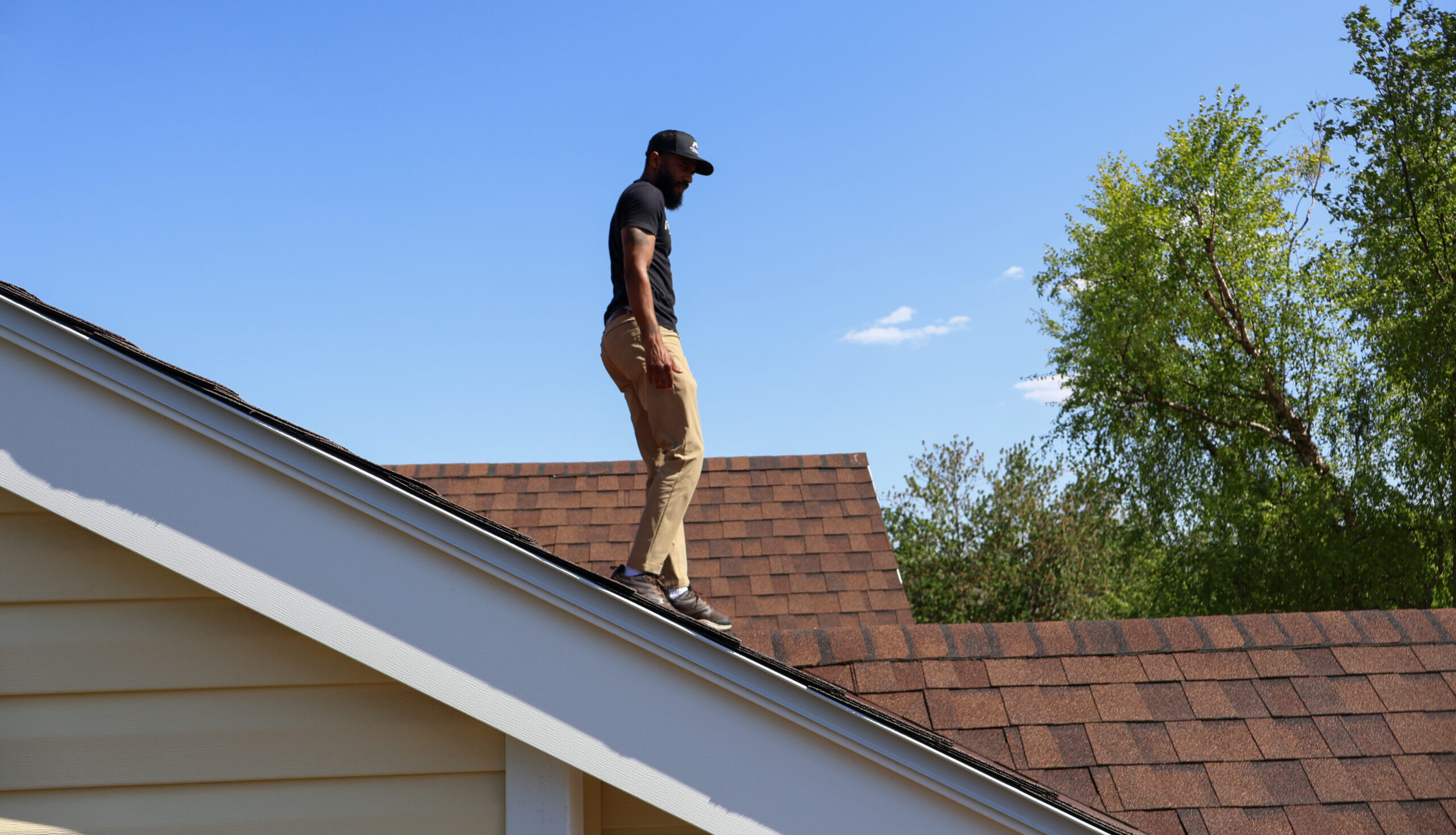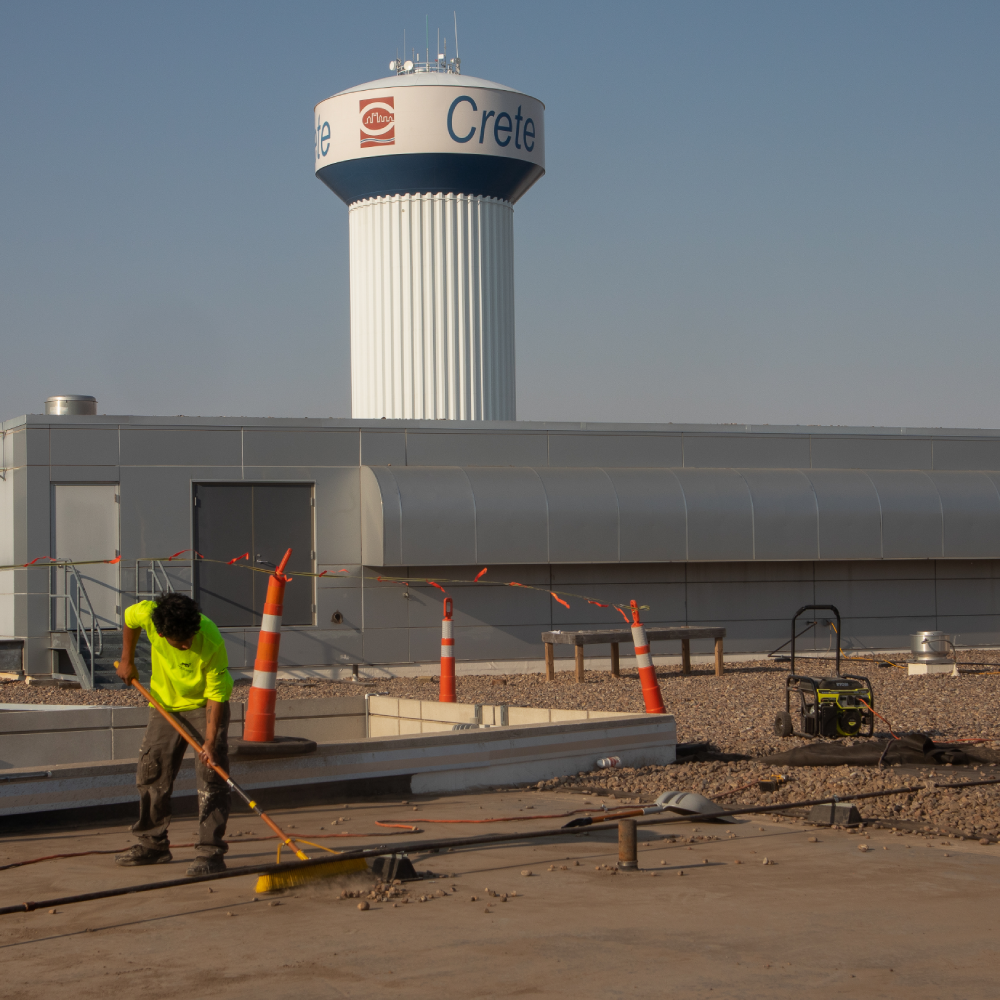A commercial roof typically lasts 15 to 45 years, depending on the roofing material, installation quality, climate conditions, and how well it’s maintained over time.
At Moose Roofing, we understand that commercial property owners in Omaha need reliable roofing systems that stand the test of time. That’s why we not only install high-performance roofing solutions but also provide ongoing support to ensure maximum roof life.
Whether you own a retail facility, an office building, or an industrial warehouse, knowing the expected lifespan of your commercial roof helps you make smarter maintenance and replacement decisions, ultimately saving time and money in the long run.
Average Lifespan of Commercial Roof Types
The longevity of your commercial roof greatly depends on the materials used. For example, TPO (Thermoplastic Olefin) roofing is known for its affordability and energy efficiency, generally lasting between 20 and 30 years. Its bright white surface reflects heat, making it a smart choice for energy-conscious businesses.
EPDM roofing, often called rubber roofing, is another standard flat roofing solution. With proper care, EPDM can last 25 to 35 years. It’s durable and highly resistant to UV rays, which makes it a solid option for buildings in areas with strong sun exposure.
PVC roofing has a similar lifespan of 20 to 30 years, and it’s ideal for commercial properties like restaurants or manufacturing plants because it can withstand chemical exposure and grease discharge.
On the other hand, metal roofing is the most long-lasting option, with a lifespan reaching 40 years or more. It’s durable, fire-resistant, and withstands Nebraska’s extreme weather conditions.
Lastly, Modified Bitumen, a popular asphalt-based material, offers a service life of around 15 to 25 years, depending on how well it’s maintained.
What Impacts the Lifespan of a Commercial Roof?
Several factors play a role in determining how long your commercial roof will last. Installation quality is crucial — even the best roofing material won’t last long if it’s improperly installed.
That’s why working with an experienced and certified contractor like Moose Roofing ensures your roof gets a solid start.
Omaha’s fluctuating weather — from summer heat waves to heavy snowfalls — can accelerate roof wear and tear. Flat roofs are especially vulnerable to ponding water if drainage isn’t well managed, which can shorten the life of the roof membrane. Frequent foot traffic from maintenance crews or HVAC technicians can also lead to damage if walk pads or protective layers aren’t in place.
Another key factor is maintenance. A roof that’s inspected and maintained regularly will always outlast a neglected one. Even small cracks or membrane blisters can escalate into serious issues if not addressed promptly. By scheduling seasonal checkups and quick repairs, you can significantly extend the life of your roofing system.
Signs Your Roof May Be Nearing the End of Its Life
Every commercial roof eventually shows signs of age. Leaks returning even after multiple repairs are a red flag that your roof’s membrane may fail.
You might notice visible signs like bubbles, cracks, or worn-out seams. Stains on interior ceilings or walls can also indicate underlying damage that’s reached the insulation layer.
Other common signs include sagging roof lines, increased HVAC costs due to poor insulation, and corrosion on metal roofing panels. If your commercial roof is over 20 years old and showing these symptoms, it’s time to consider a professional inspection. Moose Roofing offers commercial roof inspections to help you evaluate your roof’s condition and determine the best next steps.
How to Extend the Life of Your Commercial Roof
Taking a proactive approach to roof maintenance can add years to your commercial roof’s lifespan. Routine inspections — ideally twice a year — allow you to catch issues early, such as minor leaks or deteriorating flashing. After major storms, inspections are essential to check for hail damage or debris buildup.
Keeping the roof surface clean and ensuring that drains and gutters are free from obstructions helps prevent water pooling, which is a common cause of membrane degradation.
Applying roof coatings, such as silicone or acrylic, can also provide an extra layer of protection against UV rays and weathering. At Moose Roofing, we provide tailored roof restoration and coating services that can rejuvenate an aging roof at a fraction of the full replacement cost.

Your Trusted Local Roofing Company
Several factors, including material choice, local climate, and maintenance routine, determine the lifespan of a commercial roof.
By understanding these elements and taking a proactive approach to care and inspection, you can ensure your roof serves your business well for decades.
Partnering with a trusted Omaha roofing contractor like Moose Roofing means your investment is in safe hands — from installation through ongoing care.
Concerned About Your Commercial Roof's Lifespan?
Contact us at Moose Roofing today to schedule a professional roof inspection or request a free consultation. Let’s make sure your business is protected — now and into the future.
FAQs
What is the average lifespan of a commercial roof?
The average lifespan of a commercial roof ranges from 15 to 45 years, depending on the roofing material used. For example, TPO and PVC roofs typically last 20 to 30 years, while metal roofing systems can exceed 40 years with proper care. Routine maintenance and professional inspections significantly extend your roof’s service life.
How can I make my commercial roof last longer?
To maximize the lifespan of your commercial roof, schedule biannual inspections, address minor repairs early, and keep the roof surface clean and free of debris. Investing in protective coatings and ensuring proper drainage can also help prevent premature wear and tear. Working with a certified roofing contractor like Moose Roofing ensures expert maintenance and long-term performance.
When should I consider replacing my commercial roof?
You should consider replacing your commercial roof if it’s 20+ years old and showing signs like persistent leaks, membrane damage, or sagging areas. If repairs are becoming frequent and costly, a full commercial roof replacement may be more cost-effective than ongoing patchwork. A professional inspection can help determine the best course of action.







